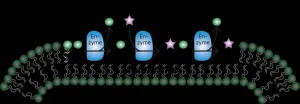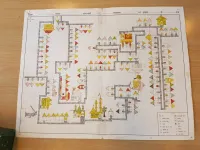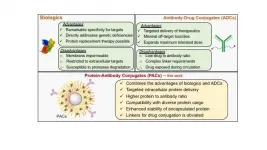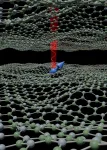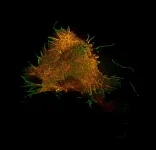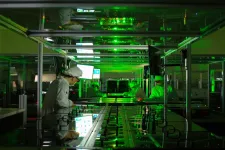Not so wicked after all?
New research shines light on stepparent fairy-tale stereotype
2021-05-06
(Press-News.org) Although the fairy tale of the wicked stepmother is a tale as old as time, the effects of blending children with their new stepfamilies may not be as grim as once thought.
In fact, new research shows that stepparents are not at a disadvantage compared to their peers from single-parent households and actually experience better outcomes than their halfsiblings -- good news for the more than 113 million Americans that are part of a steprelationship.
Led by East Carolina University anthropologist Ryan Schacht and researchers from the University of Utah, the study, "Was Cinderella just a fairy tale? Survival differences between stepchildren and their half-siblings," is available in the May edition of the Philosophical Transactions of the Royal Society B.
The study challenges the "Cinderella effect" theory. The effect contends that conflict within stepfamilies over physical, financial and emotional resources leads to higher mortality risks for stepchildren, and is a main factor in higher rates of abuse and neglect. The phenomenon suggests that stepparents play a major role in this abuse, hoarding resources for their biological children and leading to negative outcomes for stepchildren.
Schacht proposes that previous studies have placed blame for the negative outcomes associated with parental loss on stepparents yet have done so through an an "apples-to-oranges comparison." Specifically, they compare of the long-term outcomes of children who have suffered trauma like parental loss versus children from stable households. When the team compared stepchild outcomes more appropriately among those children who too have experienced the economic and emotional hardships associated with parental loss, they found no difference. Specifically, the introduction stepparenents did not increase stepchild mortality.
"The idea of a stepparent, especially the stepmother, as being an agent of evil seems to be a story as old as time," Schacht said. "It's easy to sell the Cinderella effect's result because we've been told these stories about the problems that stepfamilies experience for hundreds of years.
"We're not denying that some stepchildren suffer," he said. "However, if we truly believe it is the stepparent that is the source of negative outcomes for a stepchild, then we need to compare similar environments and experiences. A child that hasn't lost a parent through death or divorce hasn't experienced the same trauma that a stepchild has; comparing those two experiences and blaming the stepparent for diverging outcomes isn't a fair comparison."
The study compared the mortality of stepchildren whose parents remarried after the death of a spouse to children whose parents did not remarry and found three key findings:
* Parental mortality has a negative effect on children under 18 years old, especially for infants losing a mother;
* Children whose parents remarried after the loss of a spouse did not suffer a mortality rate any greater than children whose parents did not remarry; and
* Stepchildren received a protective effect when a halfsibling was introduced to their new family.
"The metrics of what makes a family successful -- household stability, relationship stability and economic stability -- are achieved by stepparents investing in their stepchildren to make that a reality. Coming in with an antagonistic approach doesn't make sense if stepparents want their relationship to succeed."
The research team analyzed a data set of more than 400,000 children from Utah from 1847-1940. Schacht said the time period provided an opportunity to analyze stepchild mortality rates in families during a natural fertility period where families were larger in size and most stepfamilies were formed due to the death of a parent.
The study adds that children who have suffered parental loss have more in common with their peers from single-parent households, facing many of the same educational, economic and health care disparities.
Schacht hopes the study will shed a light on public policy funding for interventions for families that have suffered parental loss.
INFORMATION:
ELSE PRESS RELEASES FROM THIS DATE:
2021-05-06
The European Alps is certainly one of the most scrutinized mountain range in the world, as it forms a true open-air laboratory showing how climate change affects biodiversity. Although many studies have independently demonstrated the impact of climate change in the Alps on either the seasonal activity (i.e. phenology) or the migration of plants and animals, no systematic analysis has been carried out on both consequences simultaneously. A European team of ecologists1, including Jonathan Lenoir, CNRS Researcher in the research unit Écologie et Dynamique des Systèmes Anthropisés (CNRS/University of Picardie Jules Verne), has just published a review that ...
2021-05-06
Cells of all life forms are surrounded by a membrane that is made of phospholipids. One of these are the cardiolipins, which form a separate class due to their unique structure. When studying the enzyme that is responsible for producing cardiolipins in archaea (single-cell organisms that constitute a separate domain of life), biochemists at the University of Groningen made a surprising discovery. A single archaeal enzyme can produce a spectacular range of natural and non-natural cardiolipins, as well as other phospholipids. The results, which show potential for biotechnological applications, ...
2021-05-06
Lessons Learned from India's Polio Vaccination Program Provide Valuable Insights for Future Mass Vaccination Initiatives.
Toronto - As India urgently scales up its vaccination campaign for the COVID-19 virus, a new study which examined the country's successful program to eliminate polio provides guidance on how this and future mass immunization campaigns can be successful, especially in vaccinating hard to reach groups.
The study, conducted by students and faculty with the Reach Alliance, a research initiative based at the University of Toronto's Munk School of Global Affairs & Public Policy, says that medicine alone is insufficient for the elimination of disease.
The World Health Organization declared India polio-free in 2014. ...
2021-05-06
AMHERST, Mass. - A team of researchers at the Center for Bioactive Delivery at the University of Massachusetts Amherst's Institute for Applied Life Sciences has engineered a nanoparticle that has the potential to revolutionize disease treatment, including for cancer. This new research, which appears today in Angewandte Chemie, combines two different approaches to more precisely and effectively deliver treatment to the specific cells affected by cancer.
Two of the most promising new treatments involve delivery of cancer-fighting drugs via biologics or antibody-drug conjugates (ADCs). Each has its own advantages and limitations. Biologics, such as protein-based ...
2021-05-06
May 6, 2021 -- A significant level of symptoms of depression, anxiety and post-traumatic stress may follow COVID-19 independent of any previous psychiatric diagnoses, according to new research by Columbia University Mailman School of Public Health with colleagues at Universidade Municipal de São Caetano do Sul in Brazil. Exposure to increased symptomatic levels of COVID-19 may be associated with psychiatric symptoms after the acute phase of the disease. This is the largest study to evaluate depressive, anxiety, and post-traumatic stress symptoms in tandem among patients who had mild COVID-19 ...
2021-05-06
Quantum computers or quantum sensors consist of materials that are completely different to their classic predecessors. These materials are faced with the challenge of combining contradicting properties that quantum technologies entail, as for example good accessibility of quantum bits with maximum shielding from environmental influences. In this regard, so-called two-dimensional materials, which only consist of a single layer of atoms, are particularly promising.
Researchers at the new Center for Applied Quantum Technologies and the 3rd Institute of Physics at the University of Stuttgart have now succeeded in identifying promising quantum bits in these materials. They were able to show that the quantum bits can be generated, read out and coherently controlled in a very ...
2021-05-06
The Marburg virus, a relative of the Ebola virus, causes a serious, often-fatal hemorrhagic fever. Transmitted by the African fruit bat and by direct human-to-human contact, Marburg virus disease currently has no approved vaccine or antivirals to prevent or treat it.
A team of researchers is working to change that. In a new paper in the journal Antimicrobial Agents and Chemotherapy, investigators from Penn's School of Veterinary Medicine, working together with scientists from the Fox Chase Chemical Diversity Center and the Texas Biomedical Research Institute, report encouraging results from tests of an experimental ...
2021-05-06
WASHINGTON -- Researchers have demonstrated a record-high laser pulse intensity of over 1023 W/cm2 using the petawatt laser at the Center for Relativistic Laser Science (CoReLS), Institute for Basic Science in the Republic of Korea. It took more than a decade to reach this laser intensity, which is ten times that reported by a team at the University of Michigan in 2004. These ultrahigh intensity light pulses will enable exploration of complex interactions between light and matter in ways not possible before.
The powerful laser can be used to examine phenomena believed to be responsible for ...
2021-05-06
Recently, laser scientists at the Center for Relativistic Laser Science (CoReLS) within the Institute for Basic Science (IBS) in South Korea realized the unprecedented laser intensity of 1023 W/cm2. This has been a milestone that has been pursued for almost two decades by many laser institutes around the world.
An ultrahigh intensity laser is an important research tool in several fields of science, including those which explore novel physical phenomena occurring under extreme physical conditions. Since the demonstration of the 1022 W/cm2 intensity laser by a team at the ...
2021-05-06
The health benefits of sardines and oily fish are widely known: their high levels of unsaturated fats help to regulate cholesterol levels and prevent the onset of cardiovascular diseases. However, the benefits don't end there. A study led by Diana Diaz Rizzolo, lecturer and researcher of the Universitat Oberta de Catalunya's (UOC) Faculty of Health Sciences and the August Pi i Sunyer Biomedical Research Institute (IDIBAPS), has discovered that the regular consumption of sardines helps to prevent the onset of type 2 diabetes. Nutrients found in high quantities in sardines - such as taurine, omega 3, calcium and vitamin D - help to protect against this disease which, according to CIBERDEM's Di@betes study, affects around 14% of the Spanish population over the ...
LAST 30 PRESS RELEASES:
[Press-News.org] Not so wicked after all?
New research shines light on stepparent fairy-tale stereotype
